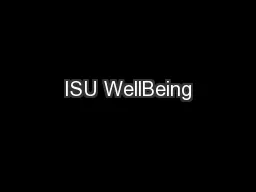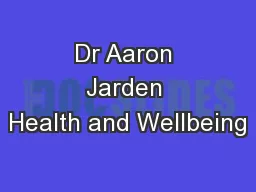PPT-CQ3 – What role do preventative actions play in enhancing the wellbeing of the athlete?
Author : celsa-spraggs | Published Date : 2018-12-15
HSC PDHPE CQ3 DP3 What role do preventative actions play in enhancing the wellbeing of the athlete Students learn about Students learn to environmental considerations
Presentation Embed Code
Download Presentation
Download Presentation The PPT/PDF document "CQ3 – What role do preventative actio..." is the property of its rightful owner. Permission is granted to download and print the materials on this website for personal, non-commercial use only, and to display it on your personal computer provided you do not modify the materials and that you retain all copyright notices contained in the materials. By downloading content from our website, you accept the terms of this agreement.
CQ3 – What role do preventative actions play in enhancing the wellbeing of the athlete?: Transcript
Download Rules Of Document
"CQ3 – What role do preventative actions play in enhancing the wellbeing of the athlete?"The content belongs to its owner. You may download and print it for personal use, without modification, and keep all copyright notices. By downloading, you agree to these terms.
Related Documents














